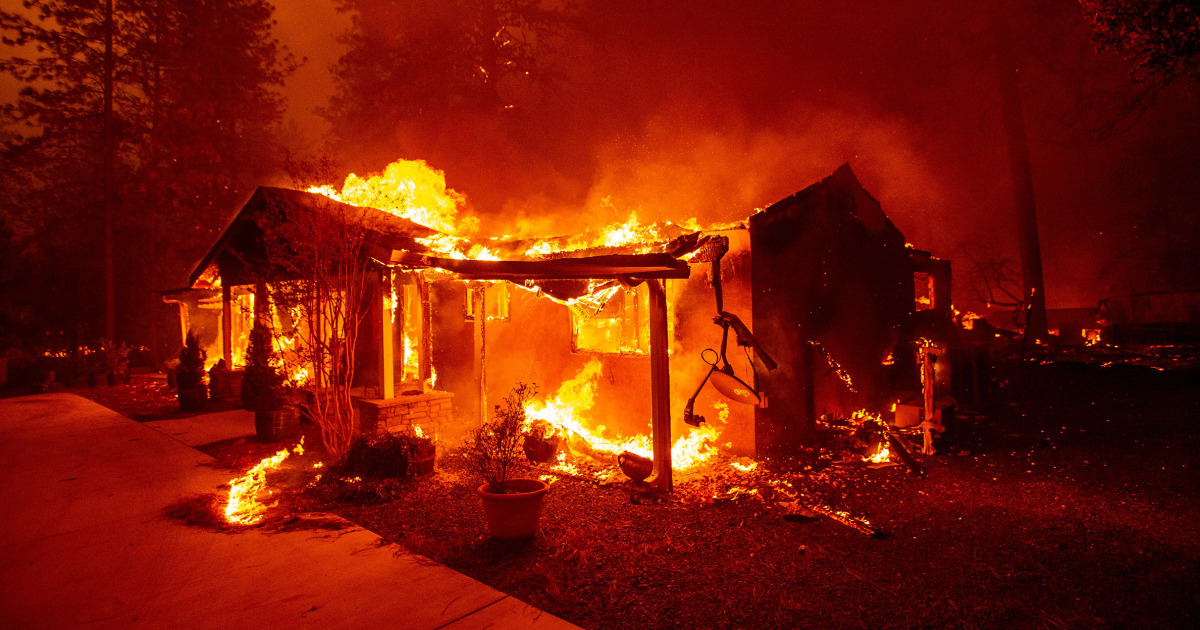After some recent intense wildfires in Northern California, scientists tested samples of singed soil and were disturbed by their findings: It was laden with a cancer-causing metal called hexavalent chromium.
Scientists think the heat of severe wildfires can transform a benign version of the metal, which is found commonly in California soil, into a notorious carcinogen, according to new research published in the journal Nature Communications on Tuesday.
As climate change intensifies wildfires, scientists are trying to figure out just how dangerous their smoke can be for human health. Researchers have found dangerous metals — from burned-out cars, houses and farms — in previous fires. The new finding adds a surprising twist to the growing body of research and suggests that wildfires burning in natural areas could be pumping smoke containing a toxic metal into the atmosphere, too.



We’ve had a push for controlled burns the last couple of decades, I wonder if this will effect that. It’s also extremely annoying to me that many of our deadliest/most destructive wildfire were caused by powerlines and electrical companies
Tbh I don’t think there’s a safe way to deliver power over hundreds of thousands of miles crazy mountainous terrain with 300 foot trees across dry tinder arid landscapes. So it’s basically like an insurance pool everyone pays for. Californians pay way more for power distribution to cover the costs of lawsuits and endless but never good enough risk mitigation by the power companies, and way more for homeowners insurance to cover the massive claims every year, even if they don’t live in a fire zone, to offset the costs for those who do. It sucks all around. No one wants to admit it. But everyone involved in the logistics and policy knows it.
That is an extremely good point, I’ve driven past those powerlines since I was a kid. I both live and hate how long our state is.
I’m personally of the opinion of socializing the power infrastructure and putting down underground wires. It’s probably not a popular opinion, but I would rather my tax dollars go to improving infrastructure. I certainly know that PG&E aren’t doing it. I’ve been speaking of Northern California, but Southern California also gets plenty of wildfires that could have been reduced by more updated powerlines in populated areas.
We set down highways, I imagine we could do that with powerlines as well.
Those power lines are often energized at 2KV per conductor. That allows for more efficient power transfer over long distances.
To isolate them, they’re placed very far up and apart from each other. Having underground cables poses huge challenges beyond just burying them.
Isolation: if they’re underground, isolation becomes a nightmare. You’ll need super think isolation for each cable to properly carry that kind of voltage. That makes the cables themselves extremely expensive on top of the cost of burying them.
Maintenance: the reason they will have to run alongside highways is because maintenance of these cables in remote locations is done via helicopter. Nowadays they’re even moving for drone based inspections. Heavy digging equipment in an area with buried high voltage cables is both a logistical nightmare and very dangerous. The helicopter maintenance crew works on these lines while they’re live. They can do that with some special equipment and the fact that they’re not touching the ground. You can’t do that with buried wires.